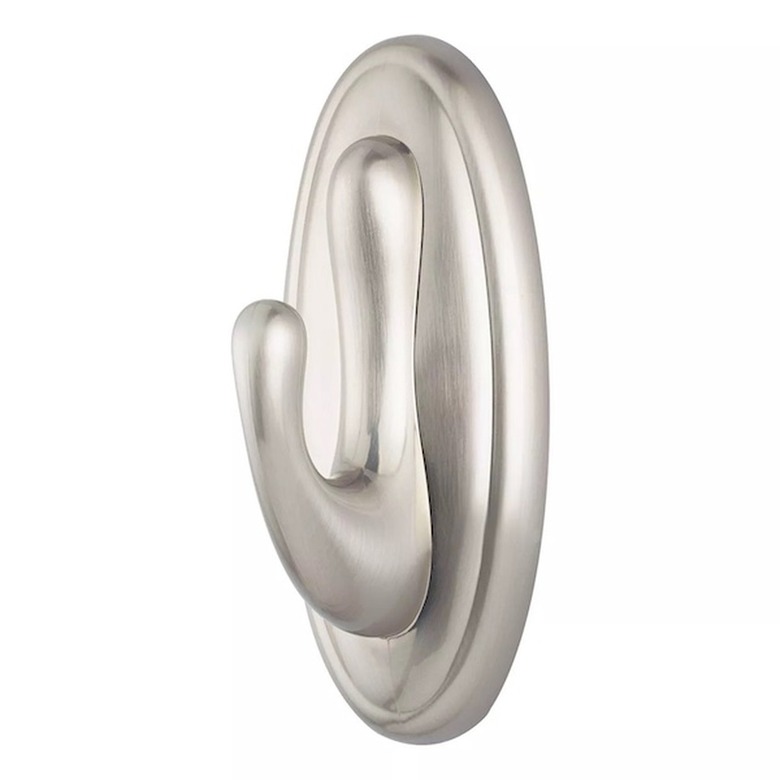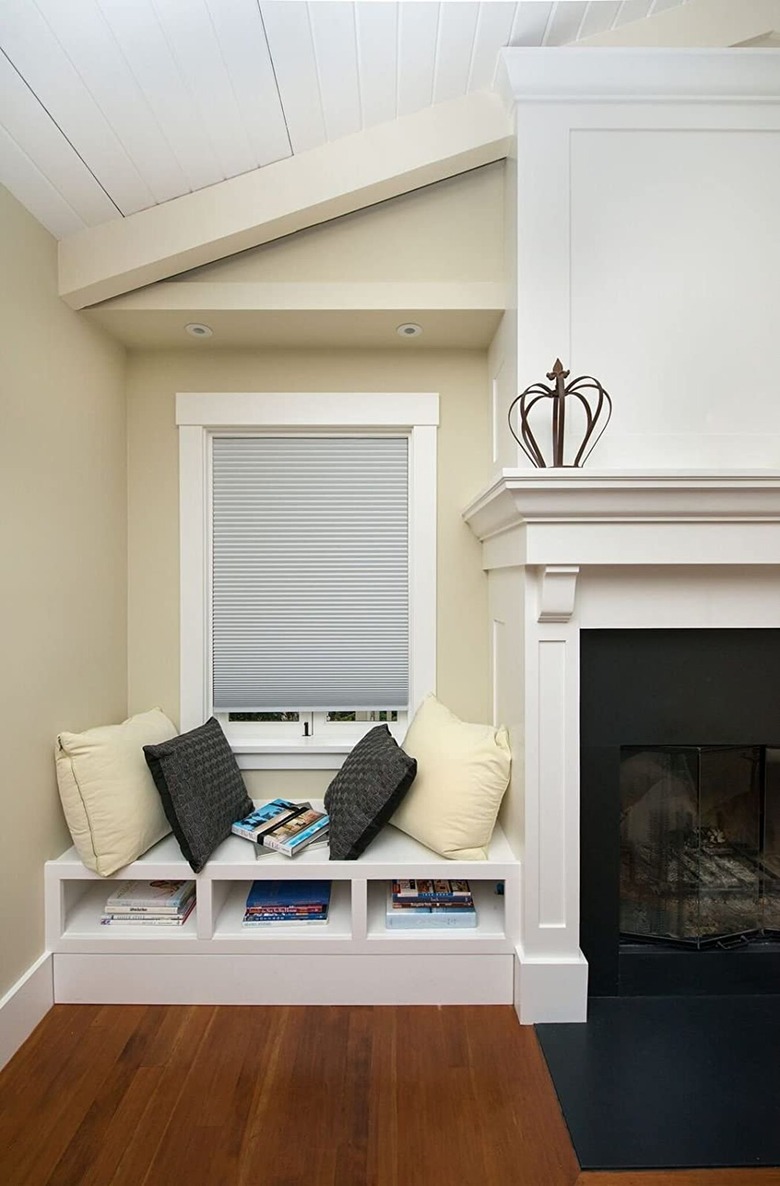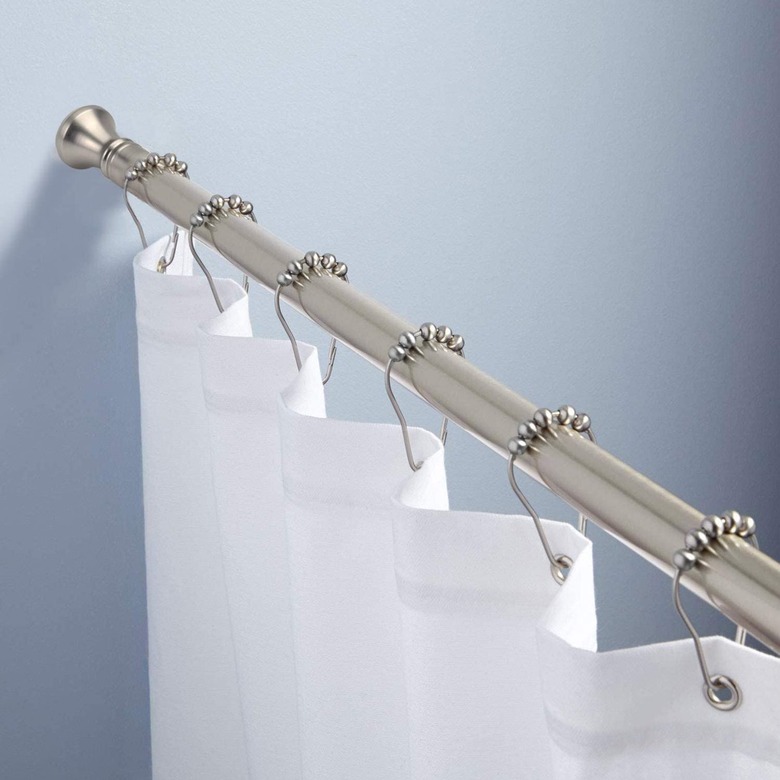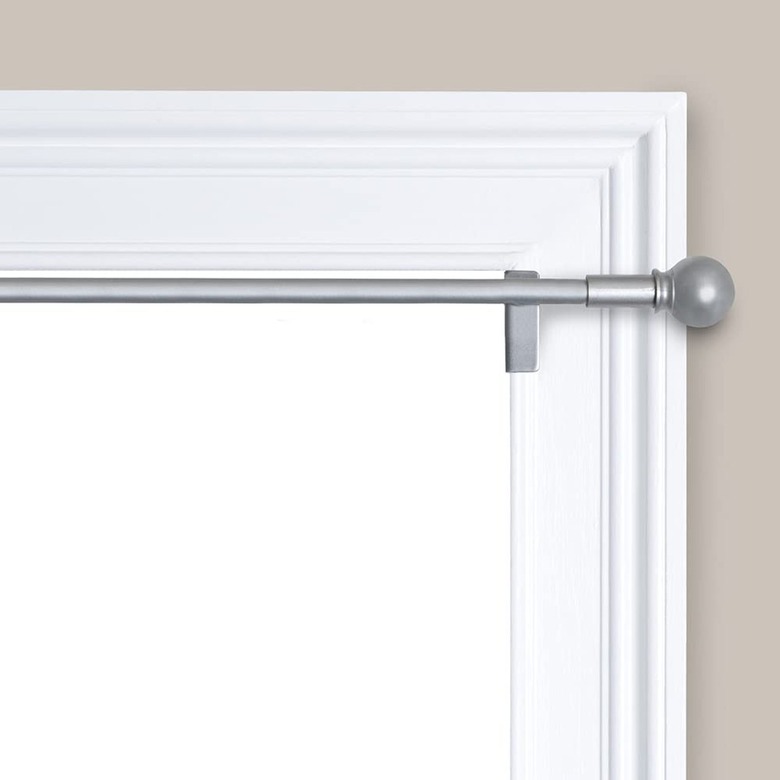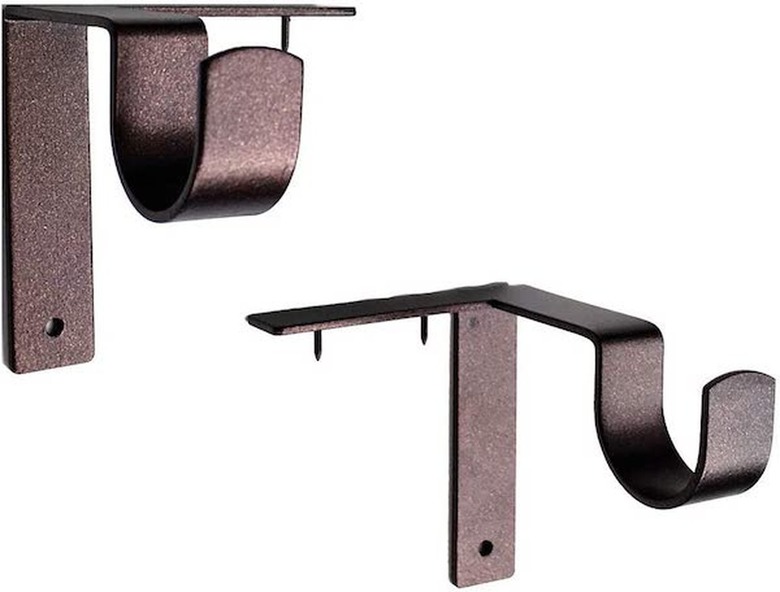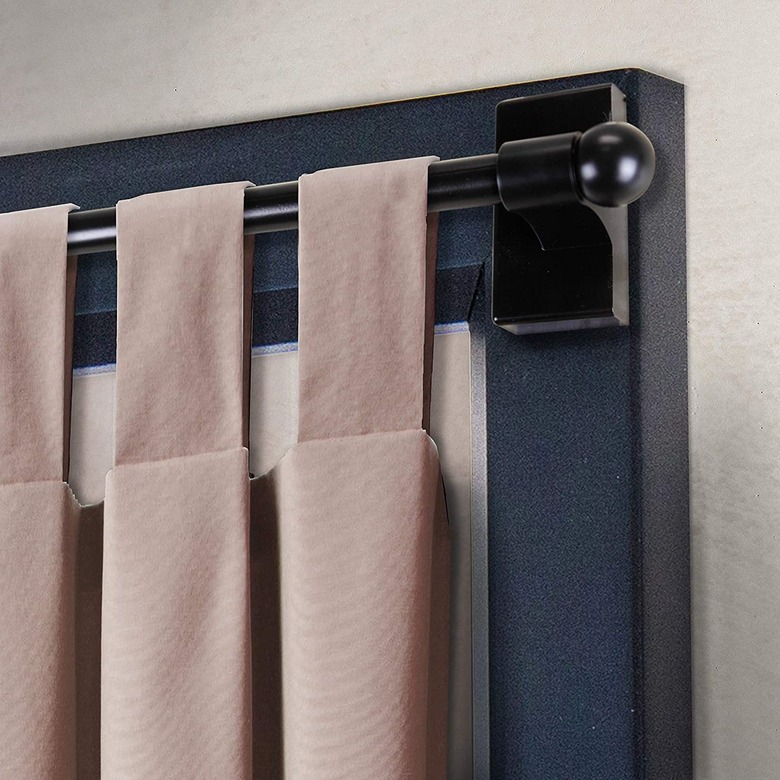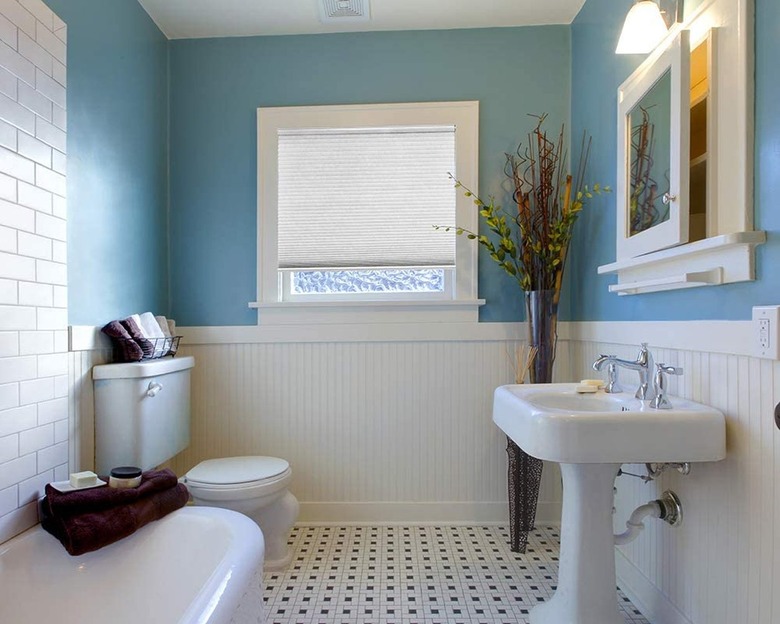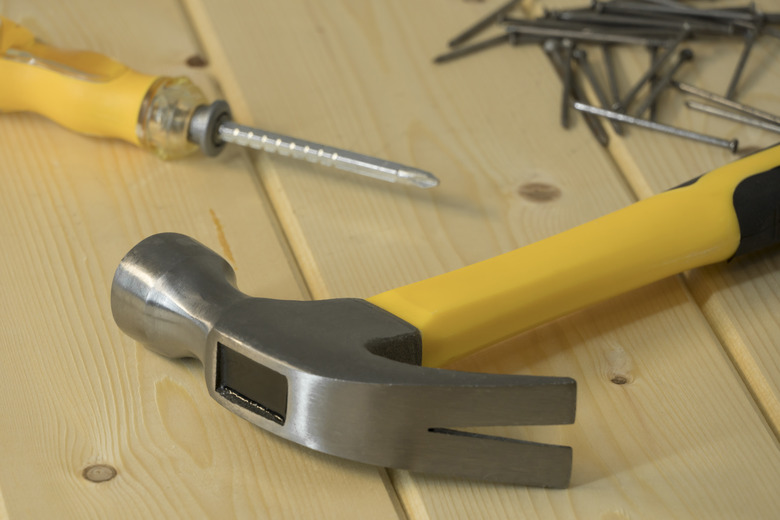How To Hang Window Treatments Without Drilling — 8 Methods That Won't Make Your Landlord Mad
Being a renter often means balancing between updating your space the way you want and ensuring you'll get your security deposit back. Though you may be able to live with not painting the kitchen cabinets or changing the ugly tile in the bathroom, some landlords are so particular that they don't even want holes in the walls — which means you may have to get creative with hanging curtain rods and other window treatments.
When you're living in a rental and want to add or swap out the window treatments for privacy, light filtration, or just plan aesthetics, here are eight no-drill methods for you to try.
1. Take Command of Your Window
Is there anything a Command hook can't do? Whether you're hanging art, wreaths, or using them for handy storage solutions, Command hooks are a life saver for renters and homeowners alike. So it's no surprise that they make hooks that allow you to hang curtains without drilling. And when it's time to take them off the wall, pulling the Command strips straight down releases the adhesive without damaging anything.
Though this is a good drill-free method for hanging a curtain rod, you do have to be weight conscious when using these hooks. The package will tell you how much weight each hook can hold, and things will eventually come crashing down if you ignore this guideline. You can, however, use more than one hook to spread the weight. Depending on the weight of your curtains, you may need three or four hooks so you can support the middle of the curtain rod as well as the ends.
If a hook is rated for 5 pounds of weight, for example, using three of them across the length of your curtain rod should safely hold up to 15 pounds. Adhesive hooks will hold an airy sheer or a lightweight curtain without issue. Heavier drapes may be too much for these hooks, however.
Tip
For proper adhesion, it's imperative that you wash the wall with alcohol before applying the hooks.
2. Built-In Adhesive Blinds
Another great drill-free invention is the self-adhesive blind. After you've cut the blind to size, you simply pull the protective coating off the adhesive strip and stick it into place. Are you wondering how well two-sided tape holds up as you pull the blind up and down over time? Good news — it doesn't have to.
These pleated blinds are often made of lightweight paper and don't go up and down like their more permanently mounted cousins. Instead, the blinds come with small clips. To open the shade, simply fold up a few of the pleats at the bottom of the blind and then clip them together. To close it, remove the clips and let the shade unfurl.
Now a word of warning about removing these blinds. Generally, adhesive stuck to a vinyl window frame or glossy wall will come off cleanly. You can help it along by holding a sponge full of hot water against the adhesive strip before you pull it away. Some elbow grease and a little Goo Gone will remove any residual adhesive.
Things may not go this smoothly on every surface, however. Matte paint, for instance, could easily come off the wall or window frame along with your adhesive strip.
3. Get a Tension Rod
Tried and true, tension rods are a good way to hang window treatments without drilling holes in your wall. This solution only works as an inside mount, however, since you need two walls for the rod to push against. Purchase a tension rod that will fit in your window and then adjust it by screwing or unscrewing the rod until it fits tightly into your window frame. Now that the rod is the right size, you can thread your curtain onto it and hang it.
Tension rods are versatile, allowing you to hang your curtains at the top of the window or in a cafe style in the middle. You might need to order a custom rod for large windows, however, and custom anything is more expensive. Tension rods can become loose over time as well, requiring a sight adjustment and a rehang.
Like Command hooks, tension rods have their weight limits. A decorative sheer or a nice cafe curtain will work with a tension rod. A heavy drape will likely fall out of the window often if you can even get it to stay in place at all.
4. Twist-and-Fit Curtain Rods
If you want the function of a tension rod but prefer the look of a classic window treatment, consider a twist-and-fit curtain rod. Like tension rods, twist-and-fit rods screw and unscrew so you can adjust the width and hold themselves in your window via this tension. Twist-and-fit rods, however, have decorative end caps that wrap around the window frame so you can see them when the curtain is on the rod.
Remember, however, that weight still matters. A twist-and-fit rod looks and acts more like a traditional curtain rod, but the system still relies on tension to hold it in place. Heavy curtains may still be a problem.
5. Kwik-Hang Brackets
This one is a bit of a cheat, as it's almost more about hiding damage than eliminating it, but nail holes are much easier to cover up than large drilled holes. Kwik-Hang curtain rod brackets install on the top of your window trim. You simply place the flat edge on top of the window frame and use a hammer to secure it there with two small nails.
Technically, if you take down the brackets, they will leave behind two nail holes. These are incredibly small, however, and they sit on top of the window frame. And let's be honest — if your landlord is so particular that they examine the top of every window and door frame, you're probably not getting your security deposit back anyway.
6. Consider Magnetic Curtain Rods
This may not be an option for you, but it's a good one if it is. Metal window frames and doors allow you to install a curtain rod held in place by magnets. Installing the rod is quick and easy, and removing it leaves no trace behind.
There are a few things to consider when going magnetic. You're most likely to have the magnetic option on doors. As such, you may need to adjust the rod now and then if the door is frequently used and the magnets shift.
7. Redi Shade Simple Fit Combination Rod
If you're worried that adhesive could cause a problem but aren't sure you can count on a tension rod, the Redi Shade Simple Fit system may work well for you. This shade combines adhesive and tension for a more secure fit. On one end of the shade is an adhesive tab that goes against the side of the window frame. On the other is a leg that pops out to hold the rod in place.
One benefit of this option is that you have a smaller adhesive area. If the adhesive does stick when you remove the shade, you need to only remove it from a small section of the inside wall. (In other words, you won't have to clean the entire length of the window shade mount.) The foot on the other end of the wall is spring-loaded, so it's less likely to slide out of place like a traditional tension rod.
8. Nail the Curtains
Usually an option of last resort, you may want to consider nailing your curtains in place. Nails do leave behind small holes, but they're much more subtle than drilled holes, and you can hide them. If you set the nails on top of the window frame, no one will ever see them. There is, however, one catch.
If you nail your curtains in place without a curtain rod, you may have trouble getting them to stay open when you want to let in light. The easy solution to this problem is to use tiebacks to hold the curtain in place when it's open. This will require a few more nails to hold the tie-backs, and you may have to position them further down the wall or window frame. The holes will be quite small, but you will technically still be making holes in the wall. They'll just be more subtle.
References
- Kwik-Hang: 5 Easy Ways to Hang Curtains Without Drilling
- Kwik-Hang: Curtain Rod Brackets
- Decorated Life: How to Hang Curtains Without Drilling – 8 Creative Ideas
- Redi Shade: No Tools Installation
- YouTube: Ron Hazelton – How to Install Temporary Window Shades
- YouTube: The Stone Crafting Workshop – Schottis Blinds Removal and Cleaning Glue Residue

